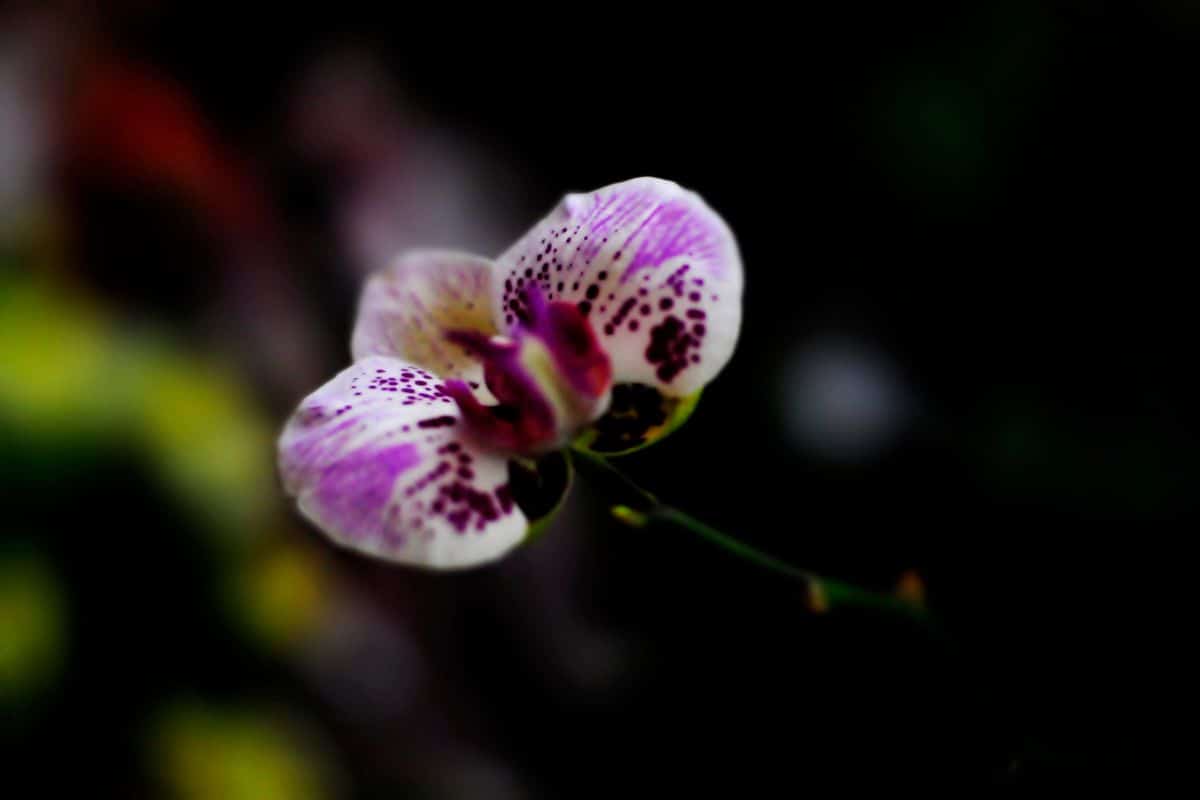The Mystique Orchid, with its striking purple blooms and elegant appearance, has become increasingly popular among indoor plant enthusiasts. These exquisite flowers bring a touch of exotic beauty to any home environment while requiring specific care to thrive. Understanding the unique needs of these orchids is essential for maintaining their health and encouraging regular blooming cycles. Let’s explore how to properly care for these magnificent plants in an indoor setting.
Essential light requirements for mystique orchids
Mystique Orchids require specific light conditions to flourish indoors. These tropical beauties prefer bright, indirect light rather than direct sunlight which can scorch their delicate leaves. An east or west-facing window often provides the ideal amount of filtered light.
During winter months when natural light decreases, you might need to supplement with artificial lighting. LED grow lights positioned about 12-18 inches above the plant can provide the spectrum needed for photosynthesis without generating excessive heat.
Watch for signs that your orchid is receiving improper lighting. Yellow leaves often indicate too much direct sunlight, while dark green leaves with no blooms might suggest insufficient light. The ideal leaf color should be a vibrant medium-green with slight reddish undertones at the edges.
Many indoor gardeners find that creating the right light environment becomes easier with practice. Just as with keeping basil plants thriving indoors, finding that perfect light balance takes observation and minor adjustments over time.
Watering and humidity management for indoor orchids
Mystique Orchids have specific water requirements that differ from many common houseplants. Unlike traditional potting soil, orchid medium should dry out completely between waterings. Overwatering is the most common cause of orchid decline in home environments.
The ideal watering schedule depends on several factors including home humidity, temperature, and pot size. Generally, watering once every 7-10 days works well for most indoor environments. Use room temperature water and allow it to thoroughly soak through the growing medium.
Humidity plays a crucial role in orchid health. These tropical plants thrive in humidity levels between 50-70%, which is higher than most homes naturally provide. Consider these methods to increase humidity:
- Place the pot on a tray filled with pebbles and water
- Group plants together to create a microclimate
- Use a room humidifier near your orchid collection
- Mist leaves occasionally (morning is best to allow drying before nightfall)
Monitoring leaf appearance helps determine if humidity needs adjustment. Wrinkled leaves often indicate too little moisture, while black spots might suggest excessive humidity promoting fungal growth. Finding this balance is similar to managing other indoor plants. Those interested in expanding their indoor gardening knowledge might also enjoy learning about various leafy plants and their care requirements.
Temperature control and seasonal adjustments
Mystique Orchids thrive within a specific temperature range of 65-80°F (18-27°C) during daytime and prefer a slight drop of about 10°F at night. This temperature differential often triggers blooming cycles. Maintaining consistent temperatures without dramatic fluctuations helps prevent stress on the plant.
Avoid placing orchids near heating vents, air conditioners, or drafty windows which can create sudden temperature changes. These temperature swings can shock the plant, causing bud drop or failure to bloom.
Seasonal adjustments become necessary as natural light and humidity levels change throughout the year. During winter, move plants away from cold windows and consider supplemental humidity as heating systems typically dry indoor air. In summer, protect from air conditioning drafts while ensuring adequate light.
Many orchid enthusiasts incorporate their plants into office garden arrangements, creating beautiful workplace displays. The key is selecting locations with stable temperatures away from vents and direct sunlight.
Potting medium and fertilization strategies
Unlike traditional houseplants, Mystique Orchids don’t grow in soil. Instead, they require a specialized orchid medium typically composed of bark chips, sphagnum moss, and perlite. This mixture provides the aeration and drainage these epiphytic plants need while still retaining some moisture.
Repotting becomes necessary every 1-2 years as the organic components of the medium break down. The best time to repot is after flowering when new growth begins to appear. Choose a container with ample drainage holes and only move up one pot size if roots are crowded.
Fertilization should follow a “weekly, weakly” approach. Use an orchid-specific fertilizer at quarter-strength every other watering during active growth periods. Reduce or eliminate fertilizer during dormancy periods or winter months.
A balanced feeding schedule promotes healthier blooms and stronger plants overall. While fall gardening often focuses on outdoor preparations, many orchid varieties enter active growth phases during this period. Those interested in seasonal gardening might appreciate fall flower planting guides to complement their indoor orchid care routine.
Recognizing and addressing common problems
Even with proper care, Mystique Orchids occasionally develop issues. Learning to identify and treat common problems quickly can save your plant from serious damage. Yellow leaves often indicate overwatering, while wrinkled leaves suggest under-watering or low humidity.
Pest management requires vigilance. Common orchid pests include:
- Scale insects – appearing as brown bumps on stems and leaves
- Mealybugs – showing as white cotton-like clusters
- Spider mites – causing fine webbing and stippled leaves
- Aphids – small insects clustering on new growth
Treat pest infestations promptly with insecticidal soap or neem oil, applied according to package directions. For severe infestations, isolate affected plants to prevent spreading to your other houseplants.
Root health indicates overall plant condition. Healthy roots appear firm and silvery-green when dry, turning bright green when wet. Brown, mushy roots indicate rot and should be trimmed away during repotting. With proper care and attention to these details, your Mystique Orchid can thrive indoors for many years, rewarding you with spectacular blooms season after season.

